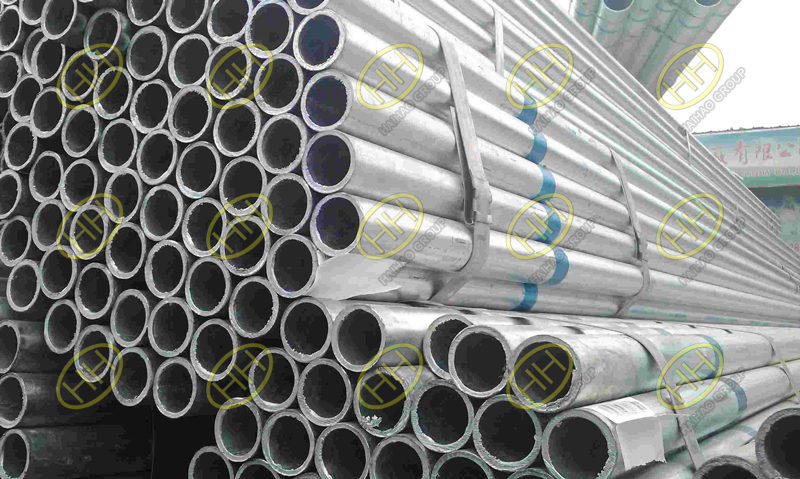The galvanized pipe is a pipe coated with zinc. Galvanized coating protects the steel from corrosion. It is most commonly used in outdoor buildings such as fences and handrails, or in some internal plumbing. The advantages and disadvantages of galvanized steel pipe coexist.
Advantages of galvanized pipe:
1) antirust
By providing an extra layer, rust must pass through if rust is contaminated. The iron in steel reacts with oxygen and water and easily causes rust, which leads to deterioration of the object. With a zinc coating, these elements are less likely to cause this reaction.

Hot galvanized steel tubes
2) Lower the price
The galvanizing process is usually less costly than other popular pipe protection methods. This is because other methods usually require a lot of labor, while galvanizing requires less physical labor. At the same time, the service life of galvanized steel pipe is also very long. It can be used for more than 50 years in many rural areas and for more than 25 years in severely exposed urban and coastal environments. As a result, maintenance costs are lower.
3) Easy to check
The inspection process of galvanized pipe is simple and clear. Galvanized coatings can be visually examined, and their thickness can be tested using a simple nondestructive testing method.
Disadvantages of galvanized pipe:
1) Internal corrosion
Although the zinc barrier in galvanized pipes does prevent rusting for some time, it eventually takes a long time. When this happens, the pipe begins to corrode from the inside out, which can eventually lead to a leak or pipe rupture.
2) Water pollution
When galvanized pipes begin to corrode, corrosive materials and lead from exposed metals may seep into your water supply. When this happens, these minerals start to form plaques that cover the inside of the pipes. Over time, that patch begins to limit the flow of water in your home, and the water can even change its color.







